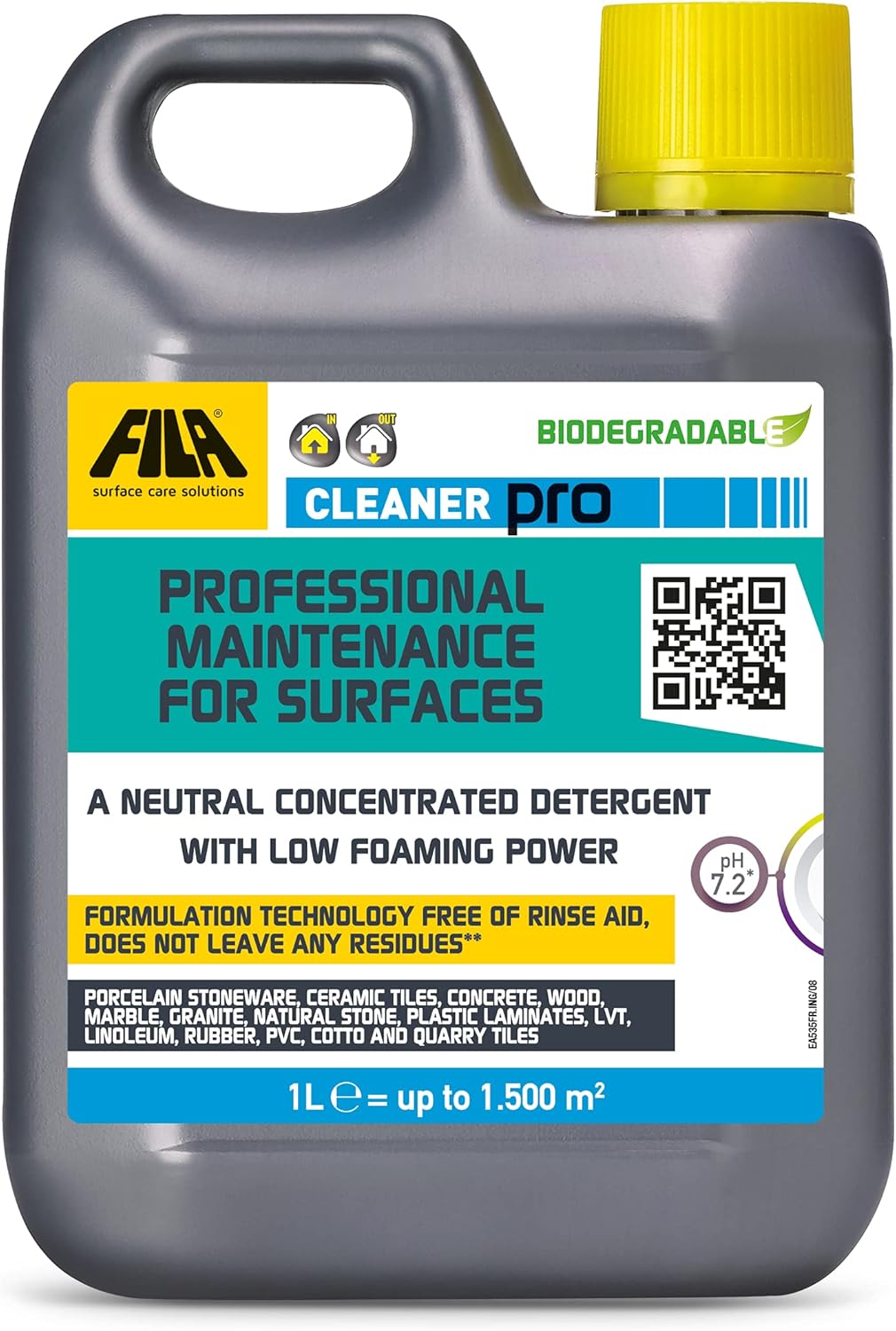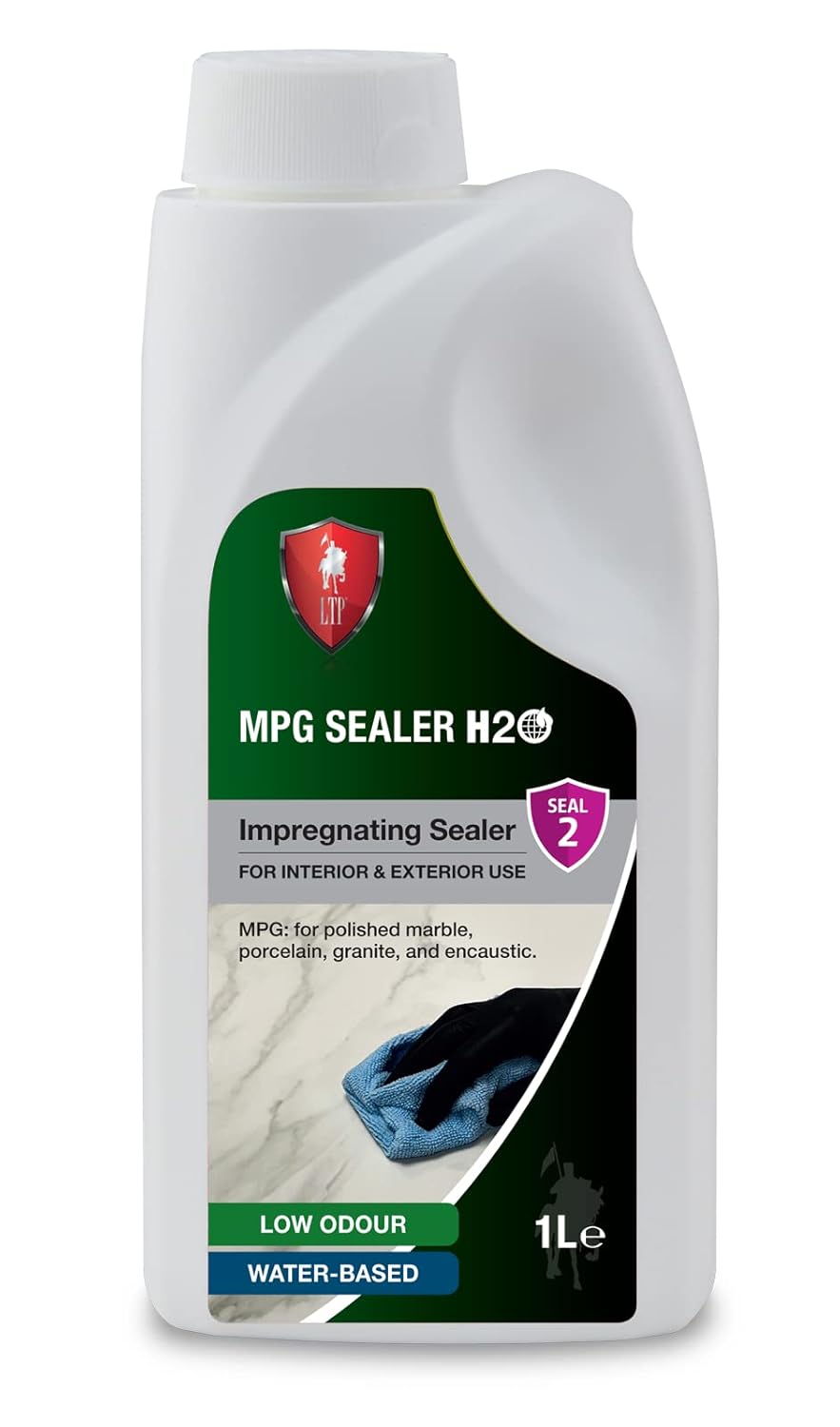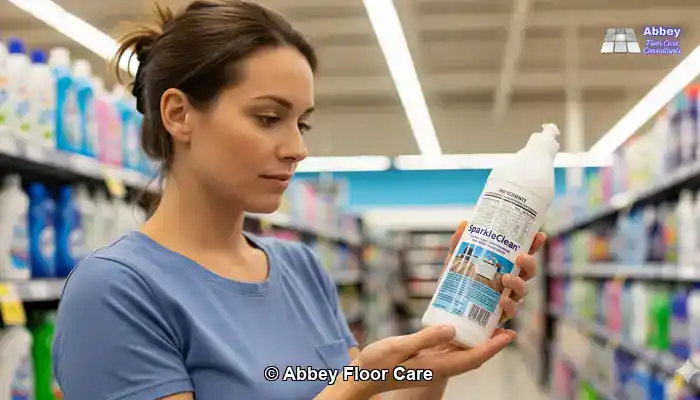
Last Updated on November 12, 2025 by David
Key insights from the article, “What Is the Best Product for Terrazzo Cleaning?
- Use pH-neutral cleaners regularly to prevent etching or dulling, especially in terrazzo containing marble chips. This approach ensures the longevity and visual charm of your flooring.
- Alkaline cleaners are effective for deep-seated grime, but they must be rinsed thoroughly and resealed if allowed to sit too long to avoid damaging the surface.
- Steer clear of acidic, bleach-based, or abrasive cleaners, as they can inflict lasting damage to terrazzo, compromising its visual appeal over time. Selecting the right cleaning products is vital.
- Topical sealers can be beneficial when maintained and reapplied properly, enhancing gloss and protection in high-traffic areas, thereby increasing the durability of terrazzo.
- Consistent maintenance using soft tools and quick spill management preserves the finish and reduces the need for frequent deep cleanings, contributing to a lasting shine.
Discover the Distinctive Features and Care Requirements of Terrazzo Floors

What Constitutes Terrazzo? Exploring the Composition of This Unique Flooring Material
Terrazzo is an innovative composite flooring solution produced by blending marble, quartz, granite, or glass chips within a cement or epoxy substrate. Following installation, the surface is ground and polished to achieve a smooth and decorative finish. Given its natural stone components, terrazzo is susceptible to harsh chemicals and requires careful maintenance to maintain its aesthetic appeal. Recognizing the materials that compose terrazzo is essential for homeowners, as it informs them about the specific care required to ensure the flooring’s durability and beauty, thereby making it a striking feature in any residence.
Expert Tip: Essential Products for Daily Cleaning and Maintenance of Terrazzo Floors

Fila Pro Floor Cleaner
|

LTP MPG Sealer H20
|

Vileda H2PrO Spin Mop System
|
Understanding the Special Care Requirements of Terrazzo Floors
Unlike ceramic or vinyl flooring, terrazzo is porous and has the capacity to absorb liquids if not sealed properly. Cleaners with acidic properties, bleach, or abrasive tools can dull the surface or result in irreversible staining. To keep terrazzo floors in optimal condition, it is imperative to use pH-neutral products formulated specifically for stone surfaces. Regular maintenance not only preserves the shine but also prevents long-term damage, making sure that your floors remain an attractive and durable investment for any homeowner.
Avoiding Common Pitfalls When Cleaning Terrazzo Floors

The Hazards of Acidic Cleaners: Understanding Their Impact on Terrazzo
Acidic cleaners such as vinegar, lemon juice, or lime scale removers can severely etch terrazzo surfaces, especially those containing marble chips. Even a single application can create dull patches or cause irreversible damage. Many homeowners mistakenly assume that natural acids are harmless, but terrazzo reacts differently compared to ceramic or porcelain tiles. Recognizing these risks is crucial for maintaining the integrity of your terrazzo floors over time, ensuring that they continue to radiate beauty and charm.
Protecting Your Terrazzo Floors from Steam and Bleach Damage
While steam cleaners may seem convenient, the high temperatures and pressures can weaken sealants and push moisture deeper into the substrate. Bleach, being alkaline, can discolor terrazzo over time. Both methods can jeopardize the structural integrity of the flooring, especially in older homes or areas where the sealant is compromised. It’s essential to explore safer cleaning alternatives for maintaining terrazzo surfaces effectively, ensuring their longevity and elegance.
Avoiding Abrasive Tools to Preserve Your Terrazzo Finish
Using scouring pads, gritty powders, or stiff brushes can scratch the polished surface of terrazzo. Once scratched, the floor loses its shine and becomes increasingly challenging to clean. For deep-cleaning tasks, always use soft pads and non-abrasive tools specifically designed for stone surfaces. Protecting the finish is vital for long-term aesthetics and simplifies maintenance, ensuring that your terrazzo floors remain beautiful for years, enhancing the overall look of your space.
Choosing the Best Deep-Cleaning Product: Your Guide to Effective Solutions

Identifying Safe Cleaners for Terrazzo: Key Features to Look For
Safe terrazzo cleaners are pH-neutral, non-acidic, and devoid of harsh solvents. Since terrazzo typically contains marble chips, it does not respond well to acidic or alkaline products. A balanced cleaner efficiently lifts dirt without damaging the surface or sealant. Always look for labels that indicate compatibility with natural stone or terrazzo to ensure effective cleaning while maintaining your floors in pristine condition.
In scenarios where terrazzo floors are significantly soiled—especially in high-traffic areas like kitchens and hallways—standard pH-neutral cleaners might lack the strength needed to dissolve entrenched grime. Over time, oils, grease, and dirt can become embedded deep within the porous surface, particularly if the sealant is worn, necessitating a more potent cleaning solution to restore the floor’s beauty.
The Role of Alkaline Cleaners: When Stronger Solutions Are Necessary
Alkaline cleaners are designed to break down organic soils, grease, and stubborn residues that neutral products cannot completely eradicate. These solutions emulsify contaminants, allowing them to be effectively rinsed away from the terrazzo’s pores. For severely embedded dirt, a stronger alkaline formulation may be essential to rejuvenate the floor’s original appearance, ensuring it remains a focal point in your home.
Importance of Rinsing Thoroughly After Cleaning: Preventing Surface Damage
While alkaline cleaners are effective, they must be applied with care. Leaving them on the surface longer than recommended can strip protective sealers or cause discoloration. After the suggested dwell time—usually between 5 and 15 minutes—make sure to rinse the floor thoroughly with clean water. Using a wet vacuum or making multiple passes with a mop ensures that no cleaner residue remains. Inadequate rinsing can lead to a chalky film or dullness, diminishing the overall appearance of your terrazzo floor, so ensure a thorough rinse for optimal results.
Resealing After Deep Cleaning: Preserving Your Terrazzo Investment
If the cleaner required an extended dwell time to break down soils effectively, or if the floor was previously unsealed, it’s wise to reseal the terrazzo after cleaning. Alkaline products can open the stone’s pores, making it more prone to future staining. Applying a breathable impregnating sealer restores protection and ensures the floor’s resilience against moisture and dirt, preserving its beauty and longevity in your home.
Your Comprehensive Guide to Deep-Cleaning Terrazzo Floors
Preparing Your Floors for Effective Cleaning: Essential Preparations
Start by removing loose dust and debris with a soft-bristle broom or a vacuum set for hard floors. Avoid dragging furniture or using metal-edged tools, as these can scratch the surface. If the floor has leftover polish or residue, consider using a safe terrazzo stripper before deep-cleaning to guarantee the best results. This preparatory phase is crucial for achieving optimal cleaning outcomes.
Proper Application of the Cleaner: Ensuring Effective Results
Mix your selected cleaner according to the manufacturer’s instructions. Apply it evenly across the floor using a microfiber mop or a soft applicator. Allow the solution to dwell for 5 to 10 minutes to dislodge ingrained dirt, but ensure it does not dry on the surface. Work in manageable sections to maintain control and ensure thorough cleaning, making sure every part of your terrazzo floor receives the attention it deserves.
Best Practices for Agitation and Rinsing: Maximizing Cleaning Efficiency
Utilize a soft white pad or a slow-speed rotary machine with a non-abrasive brush to agitate the surface. This method helps lift dirt from the terrazzo’s pores without scratching. Rinse well with clean water, changing the water frequently to prevent dirt from re-depositing. A wet vacuum can speed up the process and improve results, ensuring a spotless finish that showcases the beauty of your terrazzo flooring.
Drying and Buffing for a Flawless Finish: Achieving an Impeccable Appearance
Allow the floor to air dry completely or use a dry microfiber mop to remove any residual moisture. Once dry, buff the surface with a clean white pad to restore a subtle sheen. If the floor still appears dull, it may be necessary to consider resealing or polishing, particularly in high-traffic areas where wear is more pronounced. This final touch is essential for maintaining the luxurious look of your flooring.
Recognizing When to Reseal Your Terrazzo Floor: Ensuring Longevity
Signs of Sealant Wear: Knowing When Resealing Is Necessary
If your terrazzo floor looks dull, absorbs water quickly, or shows staining, the sealant may have worn off. Conduct a simple water-drop test: place a few drops on the surface and observe closely. If the water darkens the stone or disappears too quickly, it’s time to reseal your terrazzo floors, protecting them from further damage and preserving their beauty and durability.
Selecting the Right Sealer: Ensuring Optimal Protection for Your Floors
For residences in the UK, solvent-based impregnating sealers such as Lithofin Stainstop or Fila MP90 offer durable protection without altering the appearance. These sealers penetrate the surface to block moisture and stains, avoiding the creation of a visible layer. This method ensures your terrazzo maintains its natural elegance while being adequately safeguarded, making it a smart investment for your property.
How to Apply Sealer at Home: A Step-by-Step Procedure
Thoroughly clean the floor and allow it to dry for at least 24 hours. Apply the sealer evenly using a lint-free cloth or sponge, working in small sections to ensure comprehensive coverage. Allow it to absorb for the recommended duration, then wipe away any excess. A second coat may be necessary for high-traffic areas to ensure optimal protection. Always ensure proper ventilation and adhere to the safety instructions on the label during application to achieve excellent results safely.
Effective Maintenance Strategies for Terrazzo After Deep Cleaning
Weekly and Monthly Care Tips: Keeping Your Floors Pristine
To maintain the visual appeal of terrazzo, regularly dry mop with a microfiber pad to remove dust and grit. For weekly cleaning, use a diluted pH-neutral cleaner and avoid soaking the floor. Monthly, inspect high-traffic areas for signs of wear and reapply cleaner as needed. Prevent excessive wetting, which can weaken sealants over time and lead to further issues, ensuring the longevity and beauty of your terrazzo floors.
Choosing the Right Tools for Ongoing Care: Optimal Equipment for Maintenance
Microfiber mops are ideal for terrazzo as they efficiently capture fine particles without scratching the surface. Avoid using sponge mops, which can push dirt into the pores. For larger areas, consider a spray mop with refillable cartridges that allow for controlled application of stone-safe cleaning solutions. Always rinse mop heads thoroughly after each use to prevent residue buildup, ensuring effective cleaning and preserving the integrity of your terrazzo flooring.
Responding to Spills and Stains Promptly: Protecting Your Floors from Damage
Immediately blot spills with a soft cloth or paper towel. Do not rub, as this can spread the stain. For oily or pigmented spills, apply a small amount of stone-safe cleaner and rinse thoroughly with clean water. If a stain persists, consider using a baking soda and water poultice, testing first to verify it won’t affect the finish. Timely action prevents lasting marks and helps maintain the floor’s fresh and inviting look, ensuring your terrazzo floors remain in excellent condition.
Frequently Asked Questions About Terrazzo Floor Cleaning: Clarifying Your Concerns
Is Vinegar Safe for Terrazzo? Exploring the Risks
No. Vinegar is acidic and can etch terrazzo surfaces, particularly those with marble chips. Even diluted vinegar can lead to dull spots or long-term damage. Always use a pH-neutral cleaner specifically designed for stone surfaces to ensure the longevity and durability of your terrazzo floors, protecting your investment.
What If My Floor Is Damaged? Evaluating Restoration Options
If your terrazzo has scratches, stains, or dull patches, deep-cleaning alone may not be enough to restore its appearance. Professional honing or polishing may be required to eliminate surface damage. In some cases, resealing or applying a stone-safe polish can improve the look, but restoration is typically the most effective method for heavily worn floors, ensuring they regain their optimal appearance and continue to enhance your home.
How Often Should I Deep-Clean My Terrazzo Floors? Guidelines for Regular Maintenance
For most households in the UK, deep-cleaning terrazzo every 6 to 12 months is adequate. Areas with high foot traffic, such as hallways or kitchens, may require more frequent attention. Consistent maintenance in between deep cleans extends the lifespan of the sealant and keeps the floor looking fresh year-round, ensuring that your terrazzo continues to shine brilliantly and remains a stunning feature in your home.
The Article What Is the Best Product for Terrazzo Cleaning first found on https://www.abbeyfloorcare.co.uk
The Article Best Product for Cleaning Terrazzo Surfaces appeared first on https://fabritec.org
The Article Cleaning Terrazzo Surfaces: Top Product Recommendations Was Found On https://limitsofstrategy.com
The Article Terrazzo Surfaces Cleaning: Best Products to Use First Appeared ON
: https://ad4sc.com
Comments are closed